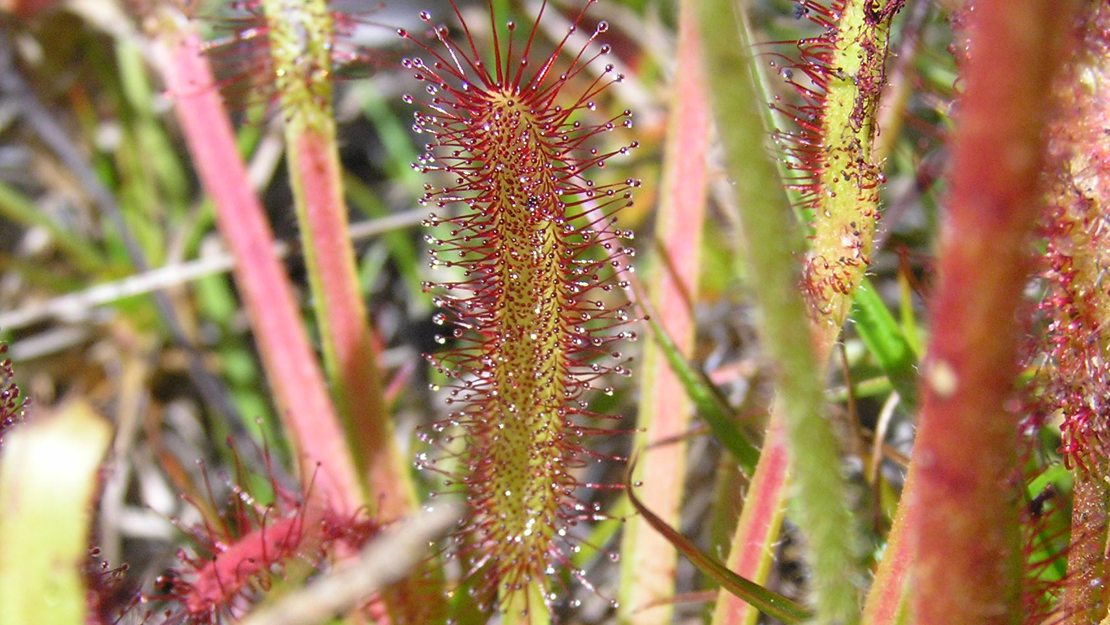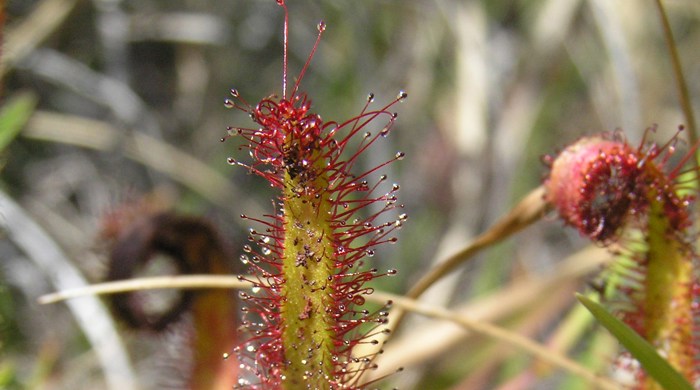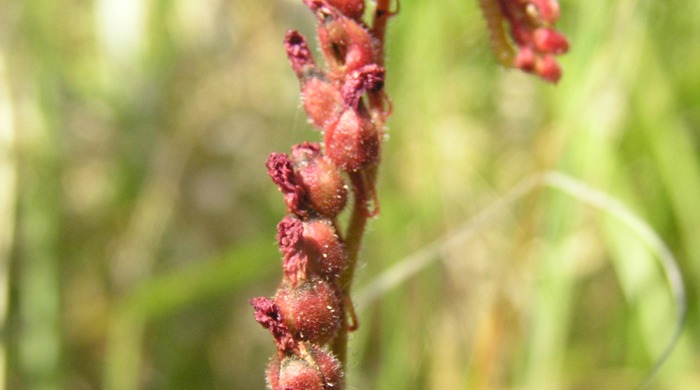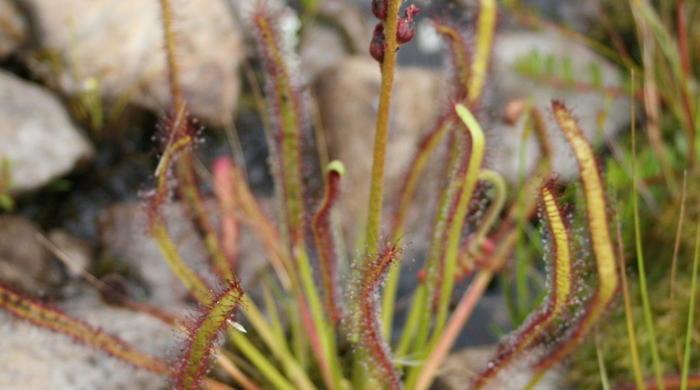Drosera capensis
Cape sundew
Family: Droseraceae
Origin: South Africa

Regional Pest Management Plan (RPMP) status
- National Pest Plant Accord Species
- Whole region — Sustained control
General description
Carnivorous, perennial, low-growing herb. Leaves are bright green, linear, < 6.5 cm long and in a basal rosette, and bear tentacle-like hairs tipped with sticky sap that capture and curl around small insects. Flowers are dark pink and borne in drooping inflorescences on stems < 35 cm tall.
What you need to know
To help protect our environment:
- You must not breed, distribute, release or sell Cape sundew. As Cape sundew is a National Pest Plant Accord species, these restrictions apply within the Auckland region and across the whole of New Zealand.
- You must not plant Cape sundew within the Auckland region, unless you are transferring an existing plant on your land to another location within the boundaries of the same property.
- You must destroy any Cape sundew on land that you occupy if it has been planted in breach of the above rules and you are directed to do so by an authorised person.
Habitats
Wetlands and wet areas.
Dispersal
Seeds dispersed by water and waterfowl.
Impact on environment
Displaces small native plants in wetland ecosystems and may capture native insects.
Control
Site Management
Follow up treated areas 3 times per year. Encourage natural regeneration of native plants or replant treated areas where possible after 2-3 treatments to establish dense ground cover and minimise reinvasion.
Recommended approaches
Physical control
Method: Dig out.
Plant parts requiring disposal: All parts.
Disposal options: Remove to greenwaste or landfill if practical
Biocontrol
Biocontrol is currently not available for this species.
Caution: When using any herbicide or pesticide please read the label thoroughly to ensure that all instructions and safety requirements are followed.






